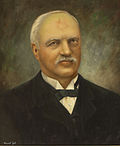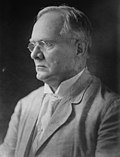State of Florida
The State of Florida was admitted to the Union on March 3, 1845. It seceded from the Union on January 10, 1861, [38] and joined the Confederate States of America on February 8, 1861, [39] as a founding member. Following the end of the American Civil War, it was part of the Third Military District. [40] Florida was readmitted to the Union on June 25, 1868. [41]
The Florida Constitution of 1838 provided that a governor be elected every 4 years, who was not allowed to serve consecutive terms. [42] The secessionist constitution of 1861 would have reduced this to two years and removed the term limit, [43] but the state fell to the Union before the first election under that constitution. The rejected constitution of 1865 and the ratified constitution of 1868 maintained the four-year term, [44] [45] though without the earlier term limit, which was reintroduced in the 1885 constitution. [46] The current constitution of 1968 states that should the governor serve, or would have served had he not resigned, more than six years in two consecutive terms, he cannot be elected to the succeeding term. [47] The start of a term was set in 1885 at the first Tuesday after the first Monday in the January following the election, [46] where it has remained. [48]
Originally, the president of the state senate acted as governor should that office be vacant. [49] The 1865 and 1868 constitutions created the office of lieutenant governor, [50] [51] who would similarly act as governor. This office was abolished in 1885, with the president of the senate again taking on that duty. [52] The 1968 constitution recreated the office of lieutenant governor, who now becomes governor in the absence of the governor. [53] The governor and lieutenant governor are elected on the same ticket. [47]
Florida was a strongly Democratic state before the Civil War, electing only one candidate from the Whig Party (the Democrats' chief opposition at the time). [54] It elected three Republican governors following Reconstruction, but after the Democratic Party re-established control, 90 years passed before voters chose another Republican. Since 1998, it has been a strongly Republican state.




















































